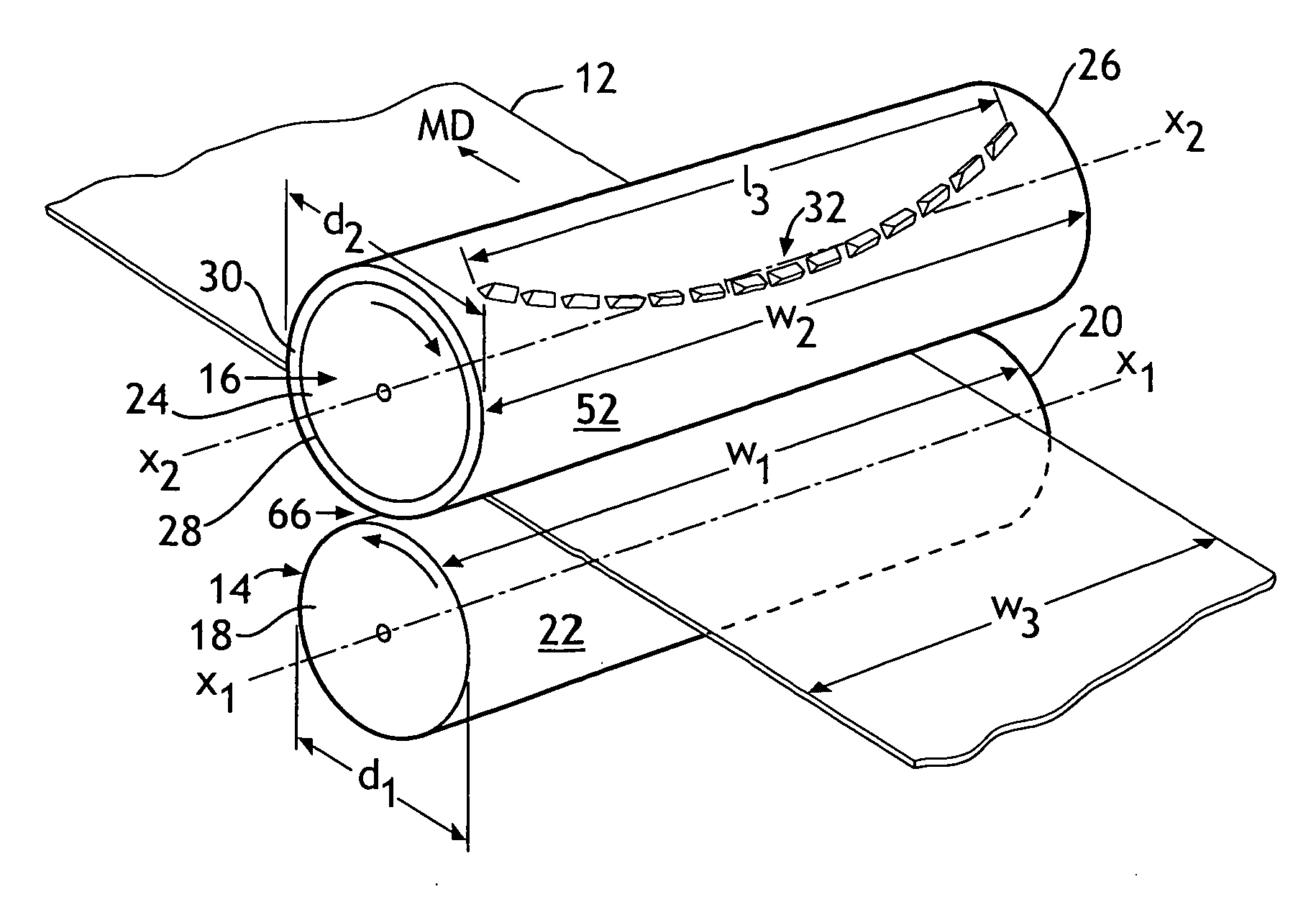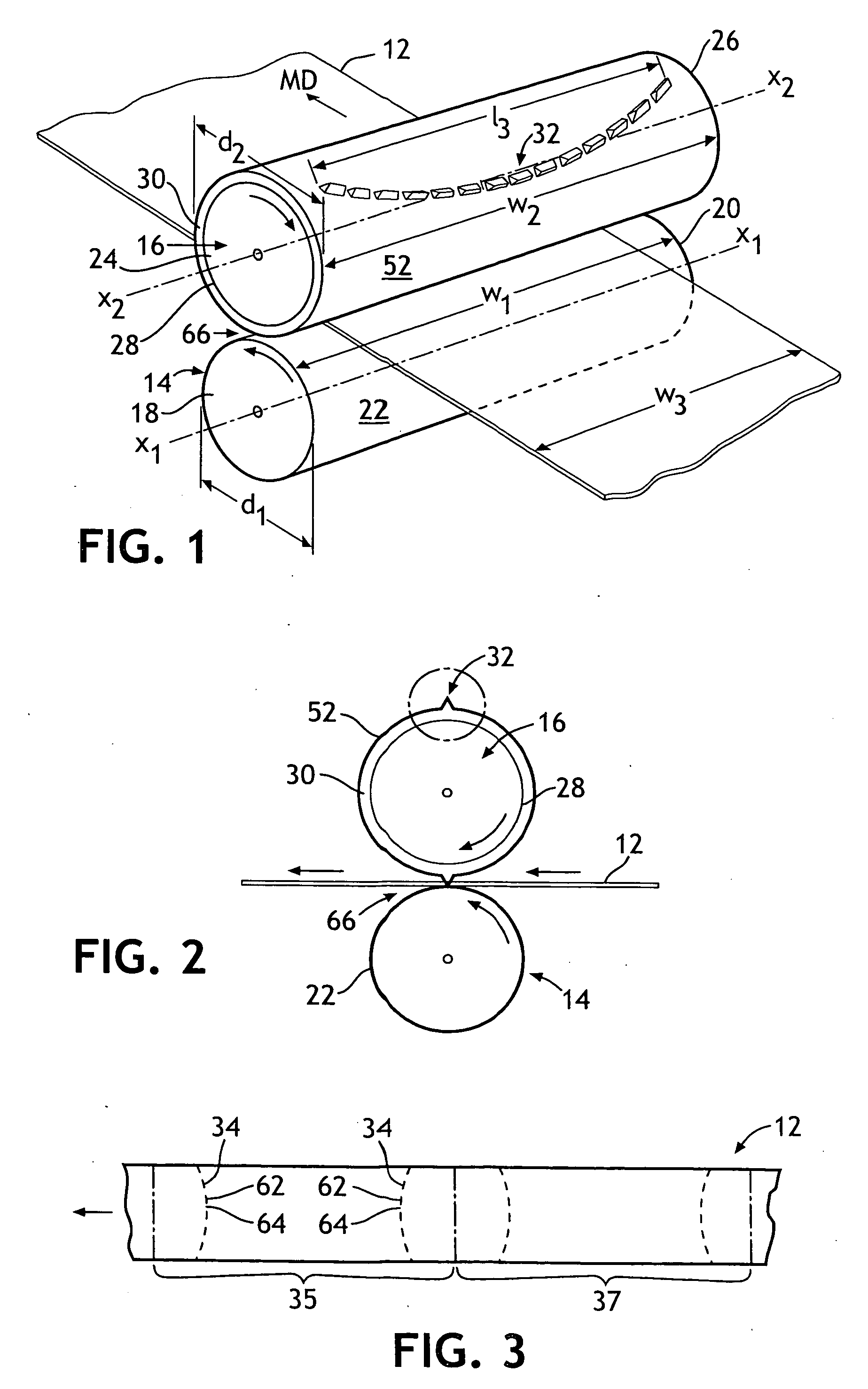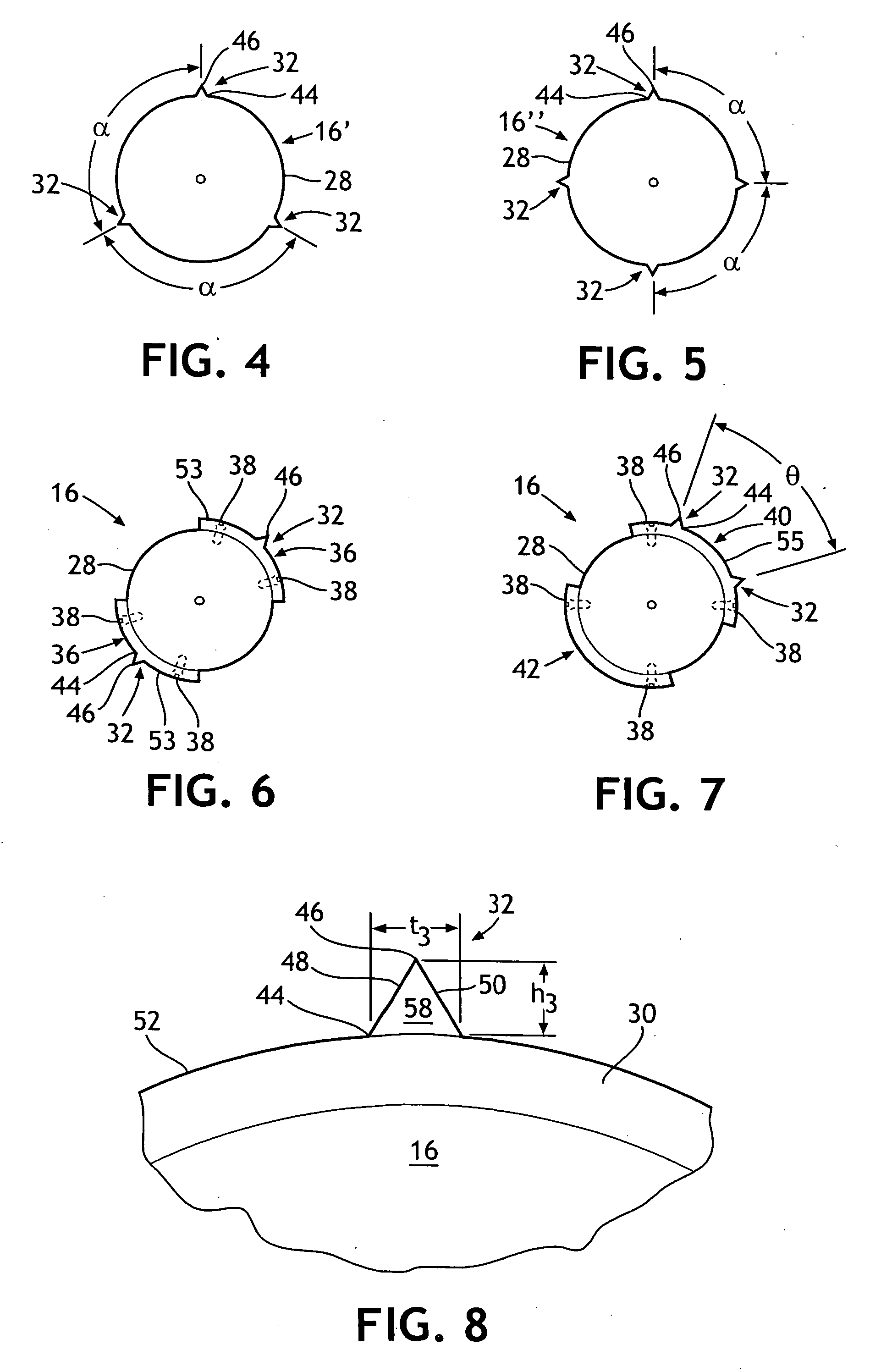Rotary die cutter for forming a non-linear line of perforations in a strip of material
a technology of nonlinear perforations and die cutters, which is applied in the direction of metal working apparatus, stock shearing machines, manufacturing tools, etc., can solve the problems of high cost of tooling required to make such a line of perforations, the design may not be the most advantageous configuration for the article or package, and the difficulty of seeing the obj
- Summary
- Abstract
- Description
- Claims
- Application Information
AI Technical Summary
Benefits of technology
Problems solved by technology
Method used
Image
Examples
Embodiment Construction
[0018] Referring to FIGS. 1 and 2, a rotary die cutter 10 is shown for forming at least one non-linear line of perforations in a strip of material 12. The rotary die cutter 10 includes a rotatable anvil roll 14 and a rotatable knife roll 16. The anvil roll 14 is cylindrical in shape and has a first end 18, a second end 20 spaced apart from said first end 18, and a longitudinal central axis X1-X1. The anvil roll 14 can be a solid roll that has a hardened peripheral surface 22 located between the first and second ends, 18 and 20 respectively. The anvil roll 14 can be formed from ferrous metal, steel, a steel alloy or from some other material known to those skilled in the art. Desirably, the peripheral surface 22 is smooth and free from irregularities, roughness or projections. Most desirably, the peripheral surface 22 has an even consistency of smoothness throughout. The anvil roll 14 has a diameter d1 that can be of almost any desired dimension. The exact diameter d1 of the anvil rol...
PUM
| Property | Measurement | Unit |
|---|---|---|
| face width w2 | aaaaa | aaaaa |
| diameter d1 | aaaaa | aaaaa |
| diameter d1 | aaaaa | aaaaa |
Abstract
Description
Claims
Application Information
 Login to View More
Login to View More - R&D
- Intellectual Property
- Life Sciences
- Materials
- Tech Scout
- Unparalleled Data Quality
- Higher Quality Content
- 60% Fewer Hallucinations
Browse by: Latest US Patents, China's latest patents, Technical Efficacy Thesaurus, Application Domain, Technology Topic, Popular Technical Reports.
© 2025 PatSnap. All rights reserved.Legal|Privacy policy|Modern Slavery Act Transparency Statement|Sitemap|About US| Contact US: help@patsnap.com



